Meat matters
Determination of moisture and fat in pork meat with FT-NIR measurement technique
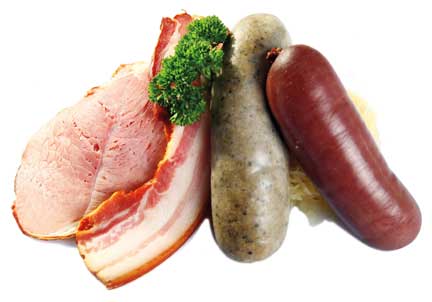
The determination of moisture in the quality control of meat is important in assessing impurities such as extra water or salts for preservation of the natural product. Too much salt is unhealthy and may have a negative impact on the human blood pressure system. A high water content is problematic when cooking or grilling and the meat is dry and tough afterwards.
Various analysis techniques can be used in salt determination, e.g. free energy dispersive X-ray analysis. UV-VIS instrumentation analyses the quality of meat and meat products from a different perspective by determination of hydroxyproline (connective tissue). The FT-NIR measurement technique can determine several characteristics from meat (such as fat and moisture) in one measurement without time-consuming sample preparation.
Quality control
Conventional analysis in the quality control of meat needs several process steps and is time-consuming. This application will show an easy and simple non-destructive method for the determination of total fat and moisture in meat products with FT-NIR analysis.
 Table 1: Meat products and typical values for fat, moisture and protein (g/100g) as found in literature (Source: 1. FNB+FSB, Heinzig, 2002, 2. Wikipedia- Liste der Inhaltsstoffe von Fleisch, 2010)
Table 1: Meat products and typical values for fat, moisture and protein (g/100g) as found in literature (Source: 1. FNB+FSB, Heinzig, 2002, 2. Wikipedia- Liste der Inhaltsstoffe von Fleisch, 2010)
The classical applications of quality control target at farm products such as grain, milk and oily fruits. With animal food, the moisture (OH-Bonding) is analyzed as well as protein- (egg white, NH-Bonding), raw fibers- (fibers, CH-Bonding and other), carboxylic groups in polymers (COOH) and fat content (CH-Bonding).
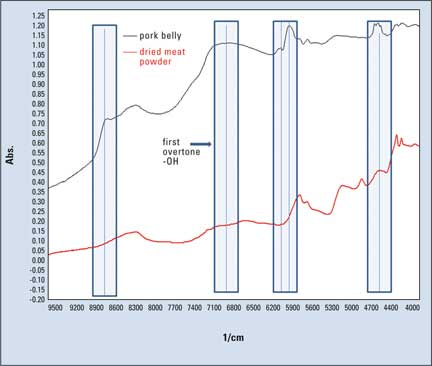 Figure 1: FT-NIR spectra from pork meat (black line) and dried meat (red line). The transparent boxes in blue mark the change of signals due to moisture, the blue vertical lines mark the approx. position of the main sample signal, predominantly -OH from water
Figure 1: FT-NIR spectra from pork meat (black line) and dried meat (red line). The transparent boxes in blue mark the change of signals due to moisture, the blue vertical lines mark the approx. position of the main sample signal, predominantly -OH from water
A typical NIR spectrum is shown in figure 1. The NIR spectrum contains information on combination bands and overtones of vibrations in the infrared-light region. In comparison to the highly resolved signal structures of the mid-infrared spectrum the NIR spectrum shows broad, smooth signal structures, making the whole spectrum sensitive for quantitative analysis.
Fat in pork meat
In order to establish a calibration model, 104 pork-based meat products were analyzed. The sources of the meat were both supermarkets and butchers. The items included low-fat pork (filet with 5.9 % fat), a pork tongue sausage with 20 % fat, cooked sausage with approx. 30 %, and bacon with 45 % of fat.
Reference Methods
The reference values of fat were determined according to CHE004W (NEN-ISO 1443/ NEN-ISO 1444, Meat and meat products – Determination of total fat content / Meat and meat products – Determination of free fat content). The fat is extracted from the samples after acid hydrolysis. The extraction was carried out with petroleum ether after which the ether was evaporated and the remainder was dried and weighed (Soxhlet extraction).
Sample preparation for FT-NIR measurement
The samples were homogenized with a mixer. A portion of the meat was transferred into a disposal Petri dish. Tests showed that error due to the polymeric material is in an acceptable range, and even better than when using a glass Petri dish. The Standard Error of Prediction (SEP) of the calculation was 0.157 % for moisture and 0.166 % for fat. Packing the sample to the bottom of the Petri dish was beneficial. This correlated to the rule for diffuse reflectance for powders, where a material thickness of minimum 3 mm is necessary, with homogeneous particles and packing of the sample.
Instrument and accessory
- IRPrestige-21 with NIR Kit
- IntegratIR – Integrating sphere for diffuse reflectance measurements with rough golden surface; the accessory was equipped with a rotating Petri dish holder for signal averaging over a wide surface of the meat sample.
Discussion of NIR spectra
Figure 1 shows two spectra with different moisture content. The top one is the natural meat and the lower one is a meat powder. The diffuse reflectance FT-NIR spectra highlight the differences. The major changes are visible at: 8694, 6890, 6091, 5950, and 4616 cm-1.
The first overtone from the OH-bonding is by definition around 6900 cm-1 (approx. 1450 nm) for free water. Water (in this case moisture) can be free or bonded-style of water and other substances, which will disappear under drying conditions.
The meat sample shown was defined as having a water content of 72.3 %, 19.4 % protein and 5.1 % fat (black in figure 1). The dried sample contained 39.4 % fat (red in figure 1).
For the analysis, many validation checks were carried out to establish a robust calibration.
- The reproducibility, repeatability and accuracy of the
- polymer-based Petri dish
- packing of meat sample
- mixed meat samples.
- The reference methods for the determination of the fat, protein and moisture contents were analyzed following the specified norms.
Based on this knowledge a calibration was established. Different forms of meat and meat products were analyzed – from filet to smoked sausage and bacon. For the calibration model a Partial Least Square method (PLS) was investigated.
Calibration result
Report of PLS Calibration
Calibration table:
Algorithm: PLS I
Number of components: 1
Number of references: 92
Range: 4,000 – 10,000
Centered data: Yes
Reconstruction
A good calibration based on PLS modelling is indicated by the Mean Squared Error of Prediction (MSEP), Standard Error of Prediction (SEP) and the reconstruction of the spectra with the help of the factors analyzed. In figure 2 the result of the reconstruction is shown. On top, the measured spectrum is overlaid with the recalculated spectrum. The difference between the spectra is visible at the bottom.
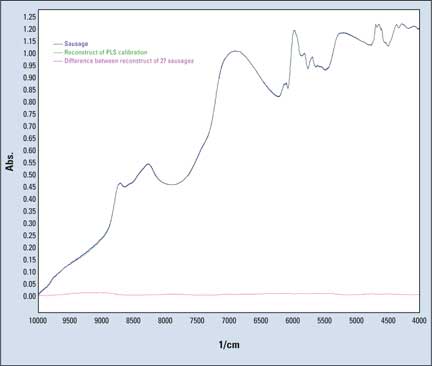 Figure 2: PLS reconstruction of the measured spectrum and the difference spectrum from measure minus calculated spectrum
Figure 2: PLS reconstruction of the measured spectrum and the difference spectrum from measure minus calculated spectrum
 Table 2: Calibration results for the fat and moisture determination in meat products
Table 2: Calibration results for the fat and moisture determination in meat products
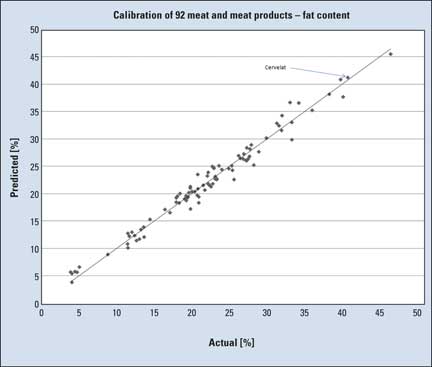 Figure 3: The spread of measurement points in the range from 4 to 50 % fat in meat and meat products. Scale is actual vs. predicted value of fat in percentage values.
Figure 3: The spread of measurement points in the range from 4 to 50 % fat in meat and meat products. Scale is actual vs. predicted value of fat in percentage values.
Reconstruction of the spectrum with the help of the factors showed a good fit. The difference was almost zero (violet in graph at bottom). Some noise was apparent only in the water ranges.
A certified pork material was used to prove the quality of the calibration.
The reference value did not define the reference method. Literature mentions that the Soxhlet method is used for the determination of fat, but it shows standard errors ranging from 0.41 to 1.14 %. This is a wide error range for one method and will influence the quality of the FT-NIR calibration.
The calibration shown here is based on 92 samples with fat contents in a range from 4 to 50 % fat in pork meat and meat products.
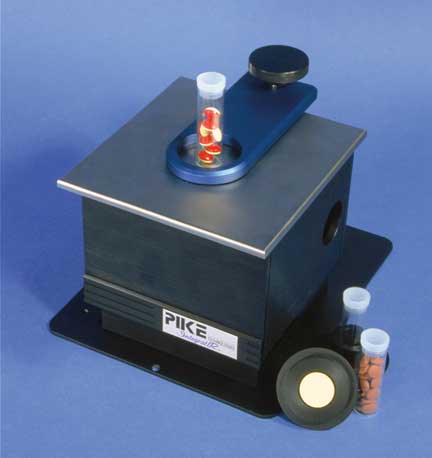 Figure 4: IRPrestige-21 with the NIR Kit and Pike IntegratIR – diffuse reflection accessory
Figure 4: IRPrestige-21 with the NIR Kit and Pike IntegratIR – diffuse reflection accessory
 Table 3: Quality check of the FT-NIR calibration model using a certified meat sample
Table 3: Quality check of the FT-NIR calibration model using a certified meat sample
Benefits
In comparison to wet chemical treatments of the meat, the analysis is simple and quick. The short measurement time reduces costs, while the material is economic with chemicals. The method saves 95 % of the standard costs involved with conventional FT-NIR analysis.
The analysis results are good for a technique using diffuse reflectance method without temperature control and a disposal sample Petri dish. Compared with the Soxhlet method which is fundamental for fat calibration the FTIR method is more sensitive because the SEP value of the fat calibration is in a range of 0.15 % and for moisture 0.21 %. Comparing the error from the disposal Petri dish which was calculated at approx. 0.166 % for fat and 0.156 % for moisture, and the error of the Soxhlet method, the NIR technique offers an alternative method to the classical wet chemical treatments. The calibration result is as good as the reference method. Where the reference method is improved, the calibration result will be even better. The same applies to the sample of standards, which can be even more than the approx. 100 used in this application.